News: Unioverse Narrative

The Hour of Truth, by Unioverse Contributing Author, Alvaro Zinos-Amaro
This is a guest blog post from Alvaro Zino-Amaro, who is one of the amazing writers contributing to the forthcoming Unioverse anthology, Stories of the Reconvergence. The book arrives on August 15, but you can pre-order your digital copy right now.
Shortly after I was invited to contribute to the fabric of the Unioverse, I began studying its grand backstory. It was an exciting, heady plunge. I found myself learning about the remnants of ancient, mysterious races; technologies that could operate across vast distances and perform feats of near-magic; cycles of history stretching back millions of years.
Against the immensity of these epic scales, I imagined the intimate journey of one solitary artist.
Art history is littered with the stories of outsiders who, time and again, master different crafts in order to express their singular perspectives. In a Unioverse comprised of countless worlds and inhabited by innumerable types of beings, where infinite variety is an everyday reality, what could the word “outsider” mean?
Pondering this question gave me the first hint of my story’s plot. The visionary artist I conceived of captivated audiences by using high technology to create dazzling works of conceptual art–but was also trying to solve the mystery of his own “otherness.”
Again, falling back on real-life examples of famous artists through history, I wondered whether the same source of the protagonist’s wild creativity might lead to some unhealthy behaviors. What if our character had a dependency on something potentially life-threatening, feeling unable to create without it? How far would he push himself?
A common thread in chronicles of substance abuse seems to be the desire to escape oneself, however temporarily. The Unioverse, I realized, offered me a built-in mechanism that could literalize this idea: transpod technology allows for the leaping of consciousness from one body–or “skin”– to another. Someone feeling deeply alienated might develop an addiction to this process of escaping from skin to skin, experiencing moments of blissful non-being in between the adjustments to, in a physical sense at least, becoming someone new. But abusing the transpods exacts a heavy toll. After several hundred jumps, the mind begins to collapse, approaching the so-called Zero Hour, a complete loss of sanity.
“Suigeneriscide,” a word I invented to combine the notions of being sui generis, or unique, and ending oneself, is both the title of my story and the name of a daring piece of conceptual art dreamed up by Raestio, the story’s troubled protagonist.
We meet him as he is preparing to showcase “Suigeneriscide,” his most bold, challenging performance yet. As the crowning achievement of a long and storied career, it spells an end; as the gateway to new personal possibilities, it marks a beginning. Will he retain his faculties long enough to complete his ambitious plan, or will the Zero Hour claim him before he has the chance to find out the truth about himself?
Even with his audacious imagination, Raestio is unprepared for the revelations that await deep within his own identity.
I hope you are too.

Singing a Deeper Song by Tim Waggoner
This guest post is by Tim Waggoner, who contributed a story to the upcoming Unioverse anthology: Stories of the Reconvergence, available on August 15.
I was thrilled to get an opportunity to contribute a story to Unioverse: Tales of the Reconvergence, and while I’d written many stories and novels for media properties before, I knew right away that the Unioverse was special. A galaxies-spanning system of instantaneous interstellar travel was awesome enough, but travelers’ ability to send their consciousness into a new body designed specifically for the planet they’re going to? The possibilities for stories were endless!
I quickly realized, though, that a time-tested bit of writer’s wisdom applied here: too much freedom isn’t always a good thing. If an anthology’s theme is narrow enough – say, pirate ghost stories centered on revenge – you’ve got only a few elements to work with. First you ask yourself what the most common ideas for pirate-ghost-revenge stories are, and then you eliminate them from your potential choices because you know other writers are going to go for the obvious concepts. You ask yourself if there’s any way to reverse a common pirate-ghost-revenge story trope. A common trope is the ghost of a pirate guards his or her hidden treasure and protects it from anyone who would steal it. So you decide to write a story about a pirate ghost desperate to give away his or her treasure, but who can’t find anyone to take it. (Maybethat’s the curse on the treasure.) You might contemplate all the pirate stories you’ve read or watched throughout your life to see if you can find some kind of personal connection that you can draw on to write your contribution to the anthology. Maybe you dressed up as a pirate for one Halloween when you were young, and while you were out trick-or-treating, several older kids stole your bag of candy. If you can find a personal connection to the anthology’s theme, you’ll be able to invest your story with a strong emotional core. And to make your story idea even more unique, you might combine several elements – say, your idea about the pirate wanting to give away his or her treasure, your candy being stolen during Halloween night, maybe a couple other things that occur to you – and viola! You have enough elements to begin drafting what will hopefully be an interesting story with a strong emotional core which isn’t like any other stories that will appear in an anthology.
These are the steps I normally take when I write for a theme anthology, but I couldn’t do any of them for Unioverse: Tales of the Reconvergence. The concept of the setting was so far beyond anything I’d ever experienced that I couldn’t draw on my own life and observations for inspiration, and the setting was so vast that literally almost any kind of story was possible. And it wasn’t like Star Trek where there are well-established galactic denizens – Vulcans, Klingons, Romulans, Andorians, etc. – to base stories on. Travelers could go to any planet, as long as it was connected to the Hub. And travelers could go for a multitude of reasons.
Like I said earlier, there’s a lot of freedom in this setting, maybe as much freedom as the travelers themselves have.
I brooded over story ideas for weeks, unable to come up with any that I liked. I started wondering if I wouldn’t be able to write a story for the anthology after all, but finally my brain kicked into gear. I looked for an aspect of the setting that other writers most likely wouldn’t explore, and I realized religion might be one of them. We tend to think of highly advanced civilizations as focusing more on science than religion, but with so many different worlds being part of the Hub and so many more planets that travelers can go to, surely religion would play some role in this galactic civilization. So I created the Immaculance, an organization of the Hub who’s tasked with, as I wrote in the story, “monitoring – and when necessary, policing – religious interchanges throughout the galactic coalition.” The Immaculance would give me my own little niche to explore, which I thought would work well in the anthology.
Since travelers get a new body – or skin, as they call it – whenever they jump to a world, they aren’t constrained by environment. They can visit worlds with different atmospheres and gravity, worlds with conditions so hazardous to human life that they couldn’t travel there otherwise. So I
decided the main character in my story – Ruth Guerrero – would go to such a world, just to make things more interesting. I also decided to give agents of the Immaculance embedded nanotech AI’s called Paracletes that could assist them in their missions. (In Christian theology, a paraclete is the Holy Spirit as advocate or counselor.) I gave Ruth’s Paraclete the name Shepherd. This way, Ruth would have a partner on her mission to talk to and bounce ideas off of. My characters needed a mission, so I decided they’d investigate an incident of religious interference on a primitive world by a rogue agent of the Immaculance, and to add an emotional core to the story, I gave Ruth a conflict regarding her own religious beliefs.
And thus was “A Deeper Song” born.
I had a lot of fun writing the story, and I hope readers enjoy it. I really like Ruth and Shepherd, and if I’m lucky, I’ll get to create more adventures for them. There’s more than enough work in the Unioverse to keep them busy.
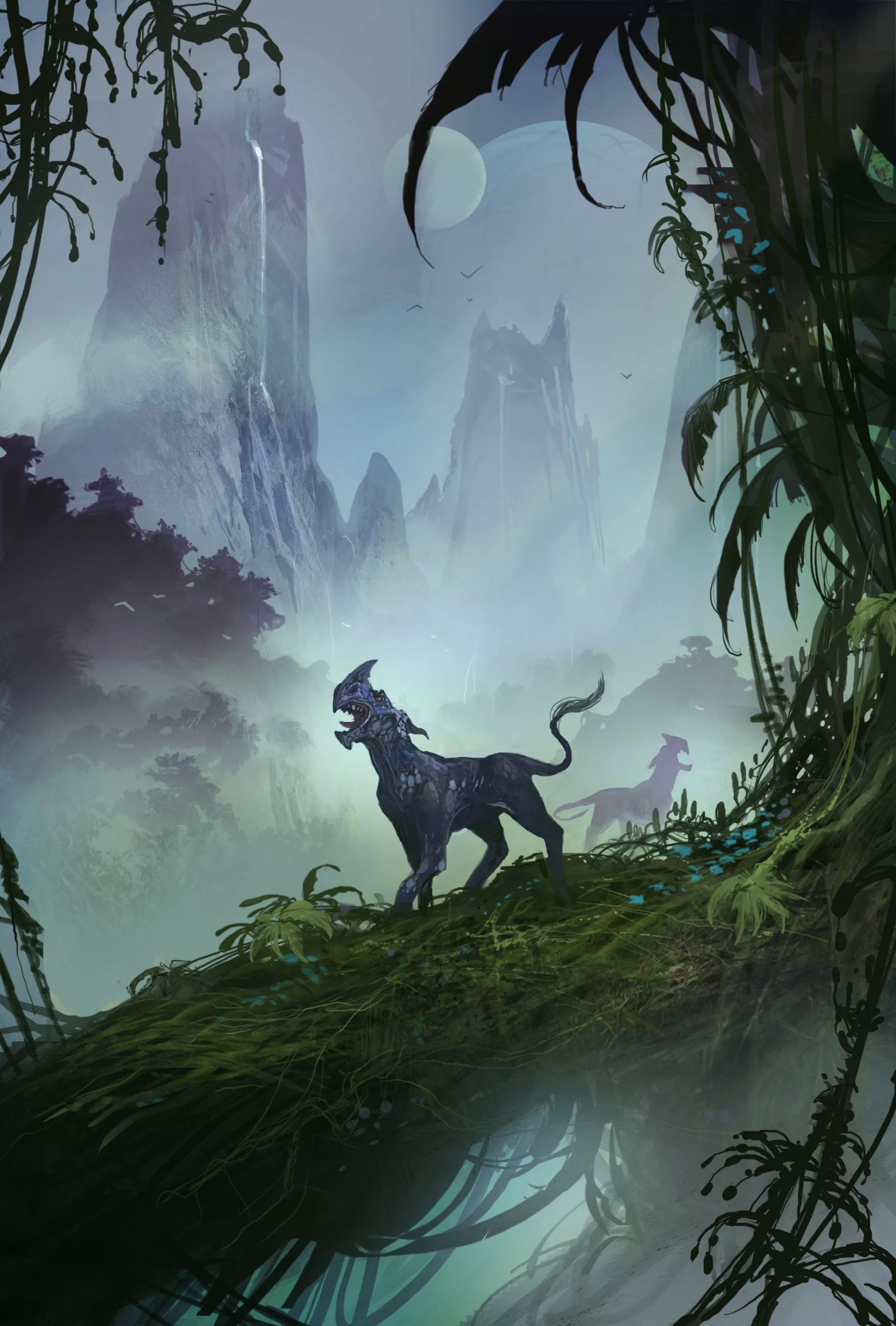
A Thriller Writer's Approach to the Unioverse by Carter Wilson
This is a guest post by author Carter Wilson, who’s work will appear in the Unioverse anthology, Stories of the Reconvergence, available August 15th.
Let’s be clear, writing science fiction is not my thing. Not that I have anything against it, it’s just hard! It’s difficult enough to create a believable location in which to set a story, but an entire planet? Come on.
I’m known for my dark, psychological thrillers. For writing from the POV of an everyday person who has horrible situations thrown at them, at which point I get to sit back and watch what they do. Will they overcome their obstacles, or die trying? It’s important to me the reader connects with the protagonist, can feel the struggle, and asks themselves what would I do?
When Josh Viola asked me to contribute a story to the Unioverse anthology, I was at first hesitant. How do I do that? Do I need to create aliens with gills and stuff? Would I need to craft a whole Tolkien-esque language? But then he explained the Unioverse, how vast it was, the limitlessness of its story-telling potential, and my mind started churning. It occurred to me that dark, personal stories about struggle and conflict are at the heart of many sci-fi novels, and my expertise at intimate and twisted thrillers could be applied to a Unioverse setting. I started to see a path forward.
And then Josh told me about the residue. About how, when a life form jumps in the Unioverse and takes on a new skin, trace residue from the previous occupant’s consciousness remains in that skin. The moment he told me that my writer’s brain went into overdrive. What if… what if a person was on vacation, maybe even their honeymoon, and the skin they rented had just been occupied by a serial killer?
Yeah, that was something I could work with.
“Ghost in the Machine” went though several iterations, and at each pass it got a touch darker and more sinister. I’ve been told it’s one of–if not the most–disturbing stories in the collection, a badge I wear with honor. But at the root of it is simple struggle. One women’s journey toward mental salvation, with the killer’s residue serving as both an obstacle and a catalyst on her path. It’s a psychological thriller that could take place nearly anywhere. In this case, that place is the planet Adara, an exotic vacation destination that’s as untamed as it is luxurious.
Hope the readers enjoy it. I certainly had fun as hell writing it. Am I allowed to call myself a sci-fi writer now?

A Q&A with Unioverse Writer Mario Acevedo
1.) What can you tell us about your Unioverse story?
My story is “Vanetta 4.” A retired bounty hunter yearns to repair the estranged relationship between himself and his daughter. His quest brings him to the Hub where he finds out that she’s fled to another galaxy in the system. When he gets to the planet where she’s hiding, he discovers that she’s in deep trouble and so he tries to rescue her. The story has lots of misdirection and betrayals. I wanted to show that even in a futuristic world like in the Unionverse, there’s much that falls between the cracks, that its characters are complicated and will cut ethical and moral corners. The vastness and complexity of the Unioverse gave me a rich platform to explore themes of longing, failure, and redemption.
2.) You’ve been described as “a very disturbed man–and I mean that in the absolute finest sense of the term.” What type of disturbance were you looking to create in the Unioverse?
The disturbance I wanted to play upon was one of my favorite literary devices—treachery in the form of the double-cross. Nothing gets the writer juices flowing like having a trusted friend stab you in the back. Add some old-fashioned greed and corruption and that’s more fodder for a good story.
3.) What’s your advice for aspiring writers who may want to create and publish their own Unioverse stories?
For starters, understand story structure and how to write interesting, empathetic characters, and how to manipulate tension and suspense to keep your readers engaged. Every story is a character study, meaning the reader is following a protagonist acting on an agenda and moving toward a definite goal. What makes the story compelling is putting obstacles in front of that goal and seeing how the protagonist reacts to those problems.
For writing in the Unioverse, study the story world, its rules and the dynamics. Then think of the most imaginative concept that fits in that world and run with it.
4.) Was writing for someone else’s IP harder or easier than creating your own? How so?
Every story is a unique challenge to write. Even if you’re writing in a narrow genre, you have to give the reader something new. Writing in the Unioverse IP made some issues easier, in that someone else has done the heavy lifting creating this complex and fantastic world. Then for me, the hard part was using my particular writing sensibilities to create a story that both fits and fleshes out what we know about the Unioverse. Part of the mandate to us writers was to create stories that added more “world” to this particular IP.
5.) Considering the Unioverse will span books, videogames and more — do you have any thoughts on what a “story” is in this day and age?
Books, videogames, and other media are just that, mediums for telling a story; the fundamentals remain the same. We need interesting characters that we care about. Those characters need challenging but achievable goals. The story—whether in written, audio, or visual format (with a definite beginning, middle, and end), or as a dynamic, interactive game—is a vicarious experience that must immerse the reader. While we like evermore sophisticated video games, at the same time, we’re just as willing to sit around the campfire and invite someone to literally “tell us a story.”

Get "Tor Gret," Unioverse Comic Issue #3!
Wow. Just… Wow.
I know I’m a little biased, but the Unioverse comic from Josh Viola, Angie Hodapp and Ben Matsuya just keeps getting better and better as the cast of characters grows and grows.
“Tor Gret,” the latest issue introducing the titular Hero, is no exception. Tor Gret is issue three of the Unioverse limited series comic book and is out now in print and digital!
We do not want to give too much away here, but as Brent Friedman, our narrative director said — “You do not negotiate with Tor Gret.”
For real, if you haven’t already, get in on all this comic book goodness right now. Don’t take my word for it — check out the sneak peek preview of Tor Gret below.
Order Tor Gret print edition
Order Tor Gret digital edition
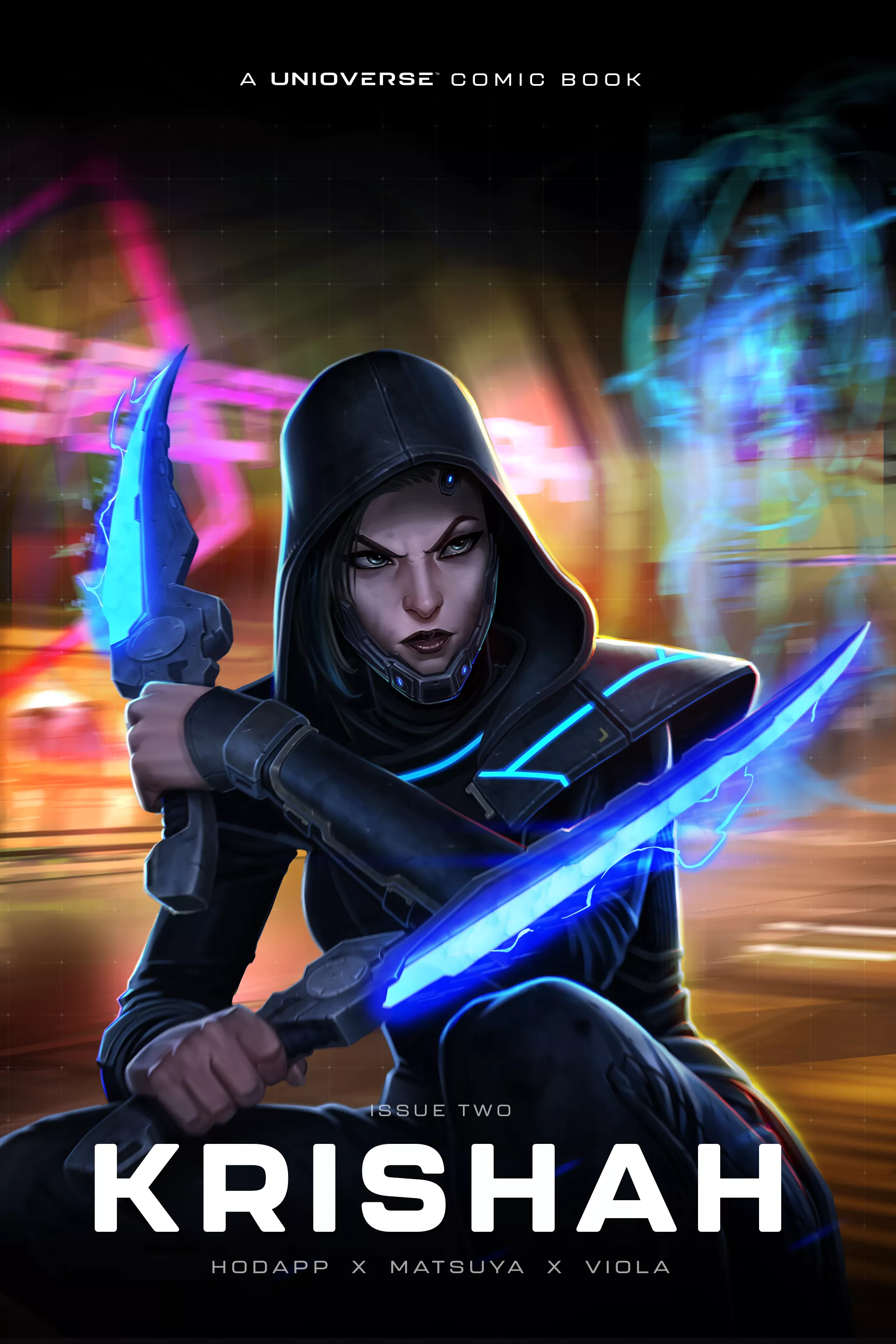
“Krishah,” the Second Issue of the Unioverse Comic Book Series is Out Now!
Ever since we launched “Reyu,” the first issue of our first Unioverse comic book series last month, fans have been clamoring for the next installment. So it’s with great excitement that we announce today that issue two, “Krishah,” is available now!
As its title suggests, this issue fully introduces you to Krishah, the deadly assassin working for the Ascended, a pious religious cult bent on dismantling the Merge Authority.
But we don’t want to spoil too much here….
Well, okay, we can spoil a little more. How about a look at the cover and the first page?
Thought you’d like that. Feast your eyes on this sneak peek, then go buy your own copy of Krishah from Hex Publishers, and then stay tuned because our Krishah Hero claim is coming up soon.


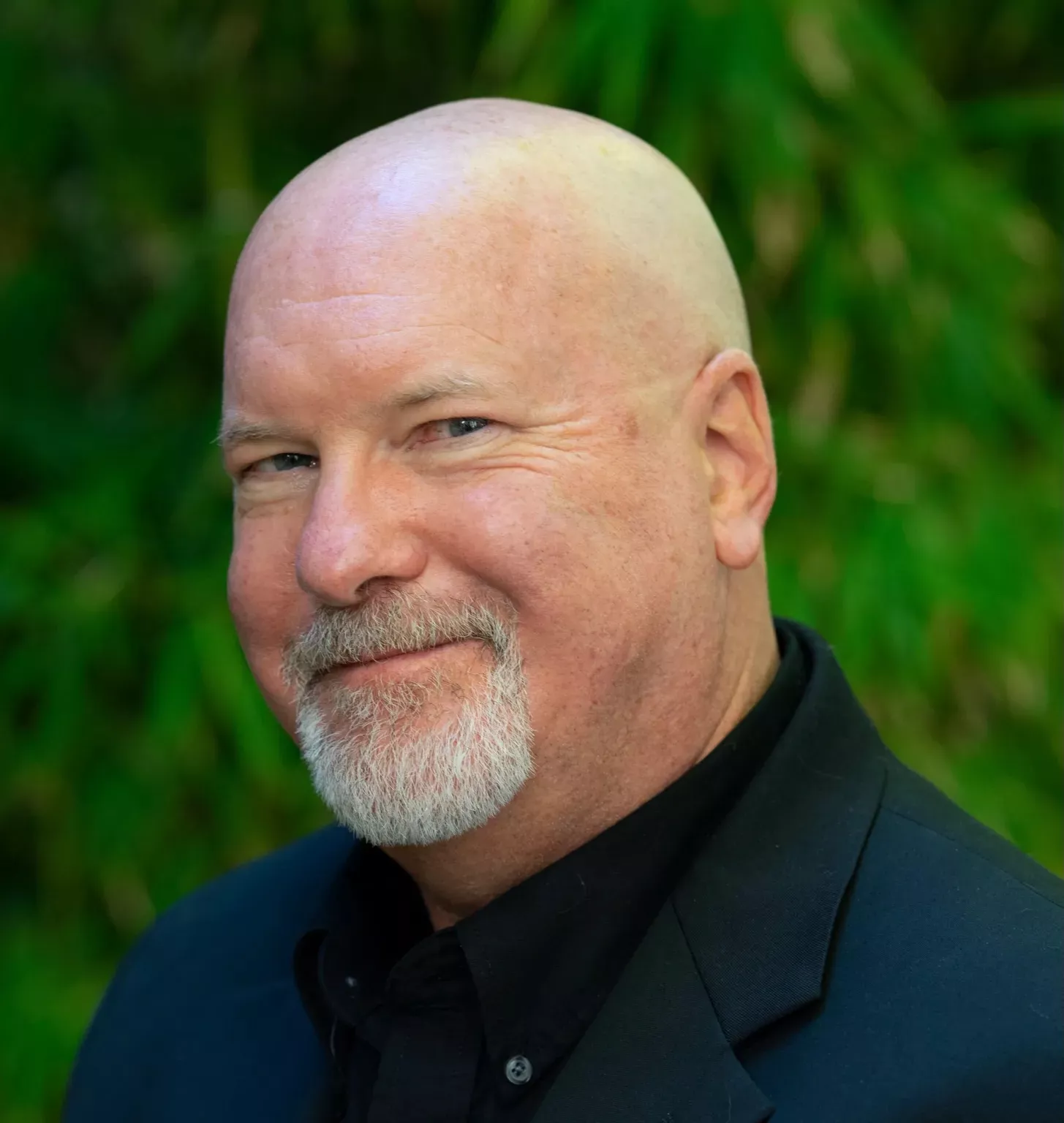
A Personal Story in a Big Unioverse, by Kevin J. Anderson
This is a guest post by best-selling author Kevin J. Anderson (Clockwork Destiny, Gods and Dragons), who has contributed short fiction to the upcoming Unioverse anthology Stories of the Reconvergence, available this August from Hex Publishers.
I’ve given many writers’ workshops and participated in a lot of story challenges. One of my favorite teaching examples is the “purple unicorn story.” If somebody asks you to write a story for an anthology about purple unicorns—and you agree to do it—then you should commit to writing the best damn purple unicorn story you can.
The long history and limitless planets, races, and alien civilizations in the Unioverse allowed me to write the best damn story…period!
I had free reign, and as I studied the parameters and background, the biological underpinnings and the nuances of the space transportation system, I caught an idea connected to love and memories, and the true horrors of a debilitating brain disease, like Alzheimers.
I had just turned 60 when I wrote this story. I’ve watched several of my older relatives fade away from dementia—still alive, but losing themselves and their past entirely. And I had just lost my close friend Neil Peart to glioma, an aggressive form of brain cancer. I thought back to my childhood and some friends I lost then, people I had not thought of in decades, and it struck me that I might be the only person left who even remembers them.
In the Unioverse, the practice of instantaneous travel through pods, with the re-creation of a cloned body on the other end, provides a person with a clean slate. And I realized that might provide a new hope for someone with a debilitating brain disease.
I was also fascinated by potential stories set in abandoned alien civilizations, ghost towns on unexplored planets. I saw the connection with those lost alien races and their forgotten histories with my character who is also losing his memories. For additional poignancy, I made him a widower, whose wife had died many years earlier. He’s terrified that if he loses his memories of her, then NOBODY will remember. Will it be as if his beloved never existed?
He can’t stand that thought, so he takes a great gamble … and the story begins.
“Ruins of Memory” turned out to be a deeply emotional and personal story for me, dredging up resonances from my own experiences with a veneer of my losses. I think I was true to my vow of writing the best damn story possible, period. “Ruins of Memory” packs a gut punch, I promise.
When you read it, I hope you enjoy the story, and I hope it draws attention to the amazing possibilities of this universe.

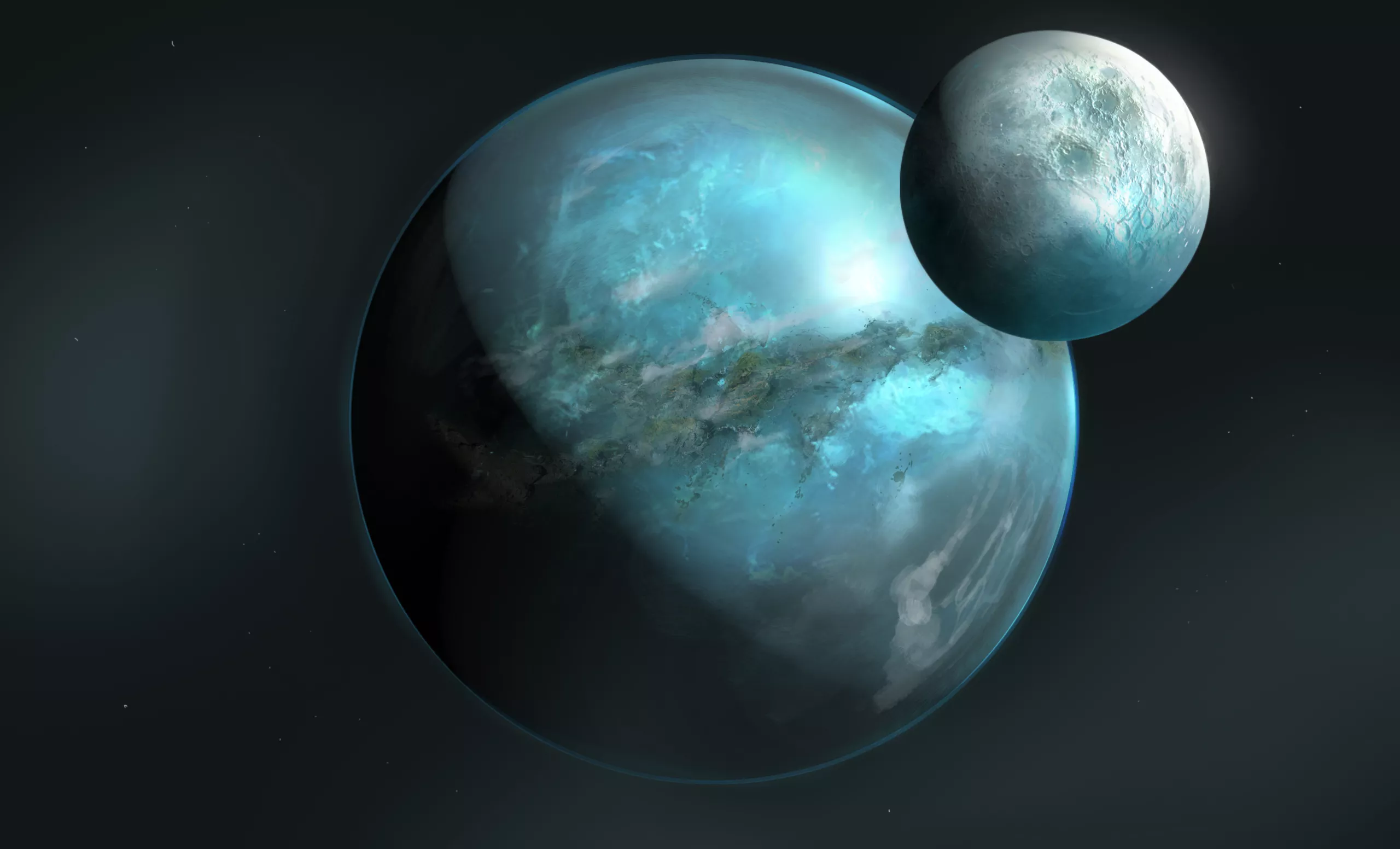
Planet Ceiba Officially Accepted into the Merge and the Unioverse
I feel like I should be one of those old-timey town criers when I announce this, so with that in mind – here we go:
Hear ye, hear ye! The planet known as Cieba has henceforth been officially accepted into The Merge!
What makes the planet Ceiba so special is that it was created by the Unioverse Community. We mean it when we say the Unioverse is a community-owned franchise! We want you to feel like you are building this massive story with us, and we’ll give you the tools and opportunities to help unleash your creativity.
Ceiba was the product of our New World Genesis Program. Over the course of two months, we provided creative prompts as starting points for the Community. We asked you to name this new planet, describe its geological and biological features, its place in the star system, its primary species, etc.
We got submissions from around the world creating details about and giving structure to the planet Ceiba. Three winners, Stagmattic, Ourflower and Luke emerged from the Unioverse Community with ideas that really stood out. All three presented their ideas and our panel of judges (aka “The Security Council”) and voila! The planet Ceiba is now fully formed and accepted into The Merge.
As Andy Baker, one of the Unioverse narrative leads put it, “Ceiba has much to offer The Merge — the potential uses of the Proten-infused flora and fauna are limitless. And Merge scientists will accelerate Ceiban tech development. Great collaboration of our three winners to pull their entries together!”
You can read all about the planet Ceiba at the Unioverse Story Wiki, and check out this gorgeous concept art created by our very own Stuart Jennett!
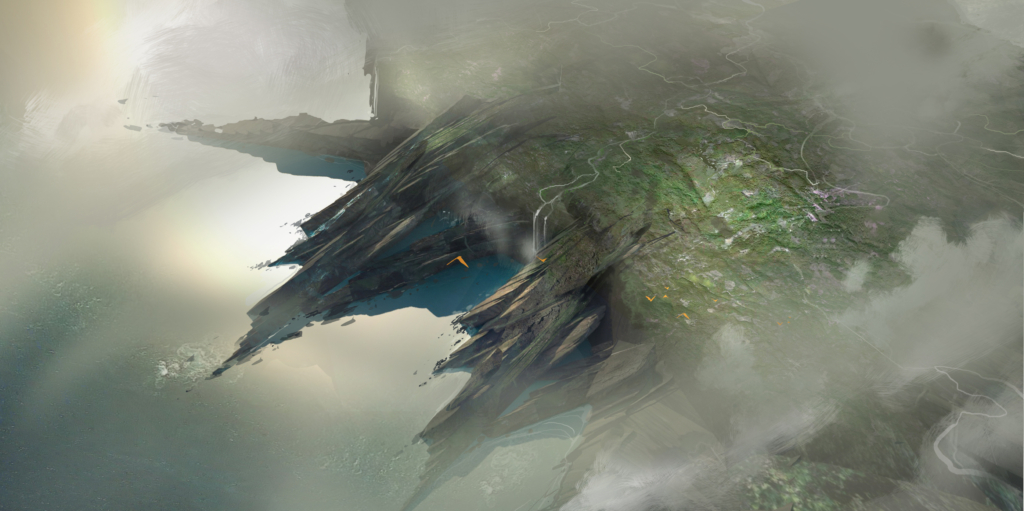

Thank you to everyone who participated in the first New World Genesis Program. If you missed out, fear not! There will be another round, so join our Discord and follow us on Twitter to be among the first to learn all the details when that program is announced!

A Q&A with Unioverse Comic Writers Josh Viola and Angie Hodapp
The first Unioverse comic is out and available to order now! We told you all about the comic series last week, and to celebrate its official release, we decided to sit down with the comics’ writers, Josh Viola and Angie Hodapp. This is a great Q&A that pulls back the curtain just a little on the creation of the comics, and even offers some sage advice for anyone who wants to make a Unioverse comic of their own!
CHRIS ALBRECHT: What can fans expect from Unioverse comics?
JOSH VIOLA: It’s a six-issue limited series and the first five introduce the Unioverse Heroes. The first is Reyu, then Krishah, Tor Gret, Anill, and Vella Janx. We’re establishing those characters in each of their comics. And then there’s a narrative thread that connects the five and in issue six, we bring all the Heroes together and introduce the villain, Silas. That will likely be a triple-sized issue that ends with a cliffhanger.
Tell me your approach to creating these stories for the Unioverse.
ANGIE HODAPP: Yeah, so we’re getting fans of the world caught up on these particular characters. What drives them? What their agenda might be, which among them are friends, or enemies, what conflicts exist between them? How will they be forced to work together, what might drive them further apart? I’ve always thought of the comics as seeding the world. If the invitation is to invite people to create in this playground, then, you know, here you go, here’s how we’re gonna get you started. I really loved helping develop the villain too, giving us that immediate conflict. So here are some heroic characters who are morally gray and interesting, but now we’ve got this big bad guy – and we get a little glimpse of his agenda. There’s also another threat that will exist that we’re hoping that creators will kind of run with and play with, as well.
VIOLA: I think we can tease some story elements at this point. The community was introduced to the Malcolm Orion story, which set the stage for the rules and the worldbuilding for people to understand. So we don’t spend much time establishing what those rules are, because that’s already been done. Anybody who follows us knows that Malcolm Orion went through the first transpod and reactivated The Hub and changed this world 500 years ago. Our story picks up there, and our villain, Silas, is a member of a hivemind species. When Malcolm Orion activated the Mass-O, the Creator Tech emitted frequencies that disrupted Silas’s hivemind. In a matter of seconds, his people were isolated across the cosmos. So Silas is on a mission to shut down the Mass-O, and reconnect his people. That’s his goal.
The Unioverse is many things and will be told across many different media. What are you hoping comics can do that some other format wouldn’t do?
VIOLA: What I think people need to understand is that the comics are actually setting the stage for what the Unioverse is all about. The Malcolm Orion story was purely backstory, that’s just introducing concepts, right? So the comic book is inviting the readers to understand who these characters are, what the various worlds across the Unioverse are like, and what the new threats are.
HODAPP: Doing that in comic book form is really kind of fun, because we’ve got such a great artist on board in Ben Matsuya. The visuals themselves are just absolutely stunning. It’s also a very accessible medium, I think, for the community to be introduced to the world.
You’ve both written books. How did you adapt your writing to the comics medium?
VIOLA: Well, we really didn’t. I come from comics as well. I’ve been building comic books since back in 2010. I’ve released a number of comics via my publishing company, Hex Publishers, as well. We’re still writing a huge amount of words because we’re scripting — we’re writing the descriptions of each scene. So visually, the readers don’t see those words. But Ben is taking those words and translating them into some gorgeous artwork.
HODAPP: In my world of editing long-form fiction, the more I’ve done it, the longer I’ve done it, the more I’ve become very focused on ‘cut this out, cut this down, cut this down. Why is this here? This chapter is extraneous. It doesn’t do anything.’ Especially working with people who write horror, science fiction, fantasy — these kind of big worldbuilding types of genres, authors tend to overwrite. So when manuscripts come in from a client, and it’s 120,000 words, and we’re like ‘No, we’re not going to shop this until we’re down to about 85 or 90,000 words at the most.’ So my brain is always very focused on cut this, cut this, cut this. And then, over the years, I’ve really learned how to distill a story down to its simplest form, everything else can go. That was kind of a fun thing for me in writing the comics. Just to get to write a bare bones story. Ben does a great job of translating what was in our imaginations. It’s just stunning.
Can you say more about the process of matching your words with Ben’s art?
VIOLA: Obviously, it starts with our words and then Ben is transforming the words into visuals. I send a script to Ben, he reads it, processes it and sends me very rough, stick figure layouts. Then I go back and forth with him and make sense of how the composition works from panel to panel until we’re good. After that, he goes in and the real magic happens: line art, inks and colors.
How long have you been working on this comic?
HODAPP: I think we started last July, laying down the outlines. And at first, it was just going to be two comic books. And then it was like ‘hey, maybe let’s do one for each hero! And hey! maybe let’s do another one for the villain! And maybe let’s make that a tripe issue!’ I think we realized it was going to be a cool project and wanted to do it right.
What advice do you have for those in the Unioverse community that might want to create their own comics?
HODAPP: I’d say just narrow the scope of the story. If you’re a new storyteller, generally, newer writers want to be big in scope. They want to write 12 volumes of their George R.R. Martin-esque fantasy, or their Neal Stevenson volumes of science fiction, right? I would recommend it’s a character in conflict. And they find some sort of resolution and that happens over the course of the narrative. If it’s a comic book, keep it simple. Keep it focused, keep that lens tight on this character. Why is this story this character’s story and nobody else’s story? And let that drive the plot.
VIOLA: I’ll just add that it’s important to find an artist you can collaborate well with, and vice versa. Make sure you can piggyback off of each other. Collaborations can be beautiful when there’s that chemistry between all of the people involved.
Unioverse comic books are available digitally or limited edition print runs at Hex Publishers.
If you want to create your own Unioverse comic, download official Unioverse assets, royalty-free!
If you want to find potential collaborators for a project, join the Unioverse Discord channel!
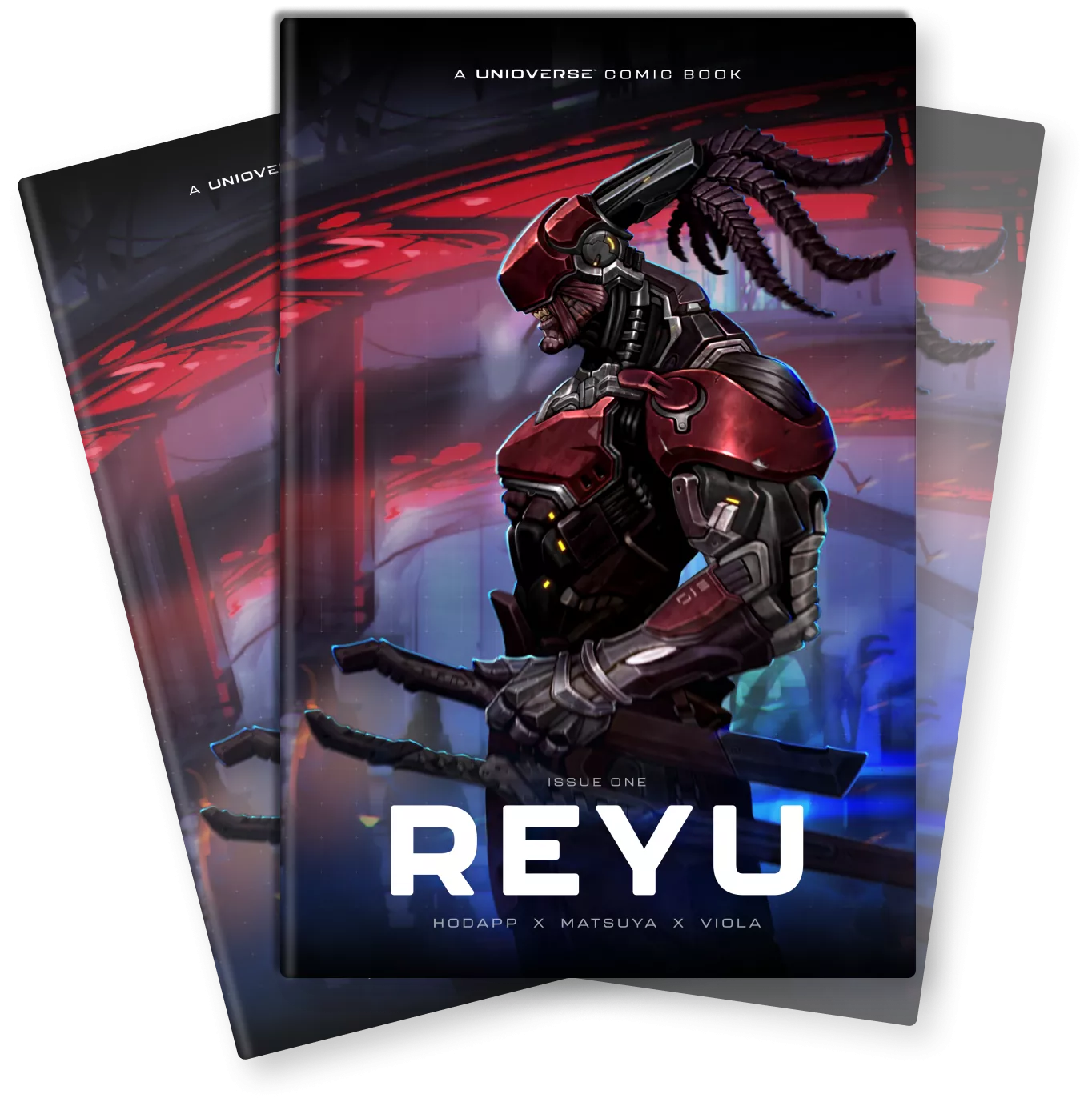
“Reyu,” The First Unioverse Comic Book, Launches May 9!
To borrow from Stan “the Man” Lee – Excelsior! – The first Unioverse comic book debuts next week on May 9!
The first issue delves into the backstory of Reyu, the deadly Ja’Din Hunter who was trapped in Jumpspace for millennia and is now a fierce protector of the Mass-O system and Creator Tech. This taut action-packed story follows Reyu as he tracks down and battles threats from the intergalactic terrorist organization known as the Ascended.
“Reyu” is the first in a six-issue monthly limited series, with subsequent stories focusing on other Unioverse Heroes like Krishah, Tor Gret, and Annill, as well as the Unioverse’s first villain: Silas Kyruk. Digital versions of these comics will be available for sale at Comixology. Print versions of the comic (including limited edition Legendary versions with variant covers!) can be purchased for $5.00 at Hex Publishers.
This initial Unioverse comic is written by Colorado Book Award winner Joshua Viola and Angie Hodapp, Director of Literary Development at Nelson Literary Agency, and illustrated by Ben Matsuya.
The Unioverse will be told across a variety of media like comic books, videogames, novels and more, and we couldn’t be more excited about the launch of “Reyu.” While this is the first Unioverse comic book series, we hope it inspires many more!
The Unioverse is a “community-owned franchise,” which means that anyone can download our high-quality assets royalty-free and use our IP to create their own stories. Have an idea for your own Unioverse comic? Awesome, you should go make it, and join our Discord to find other fans and potential collaborators. Even better, once you make it – you should sell it and keep all the money! As long as it fits within our guidelines (which are amazingly broad, TBH), you can make what you like!
We want to make the Unioverse an expansive franchise that not only rivals Marvel, but empowers its fans in ways Marvel currently does not. Hang on to your hats, true believers (another Stan Lee-ism), the Unioverse is taking off!
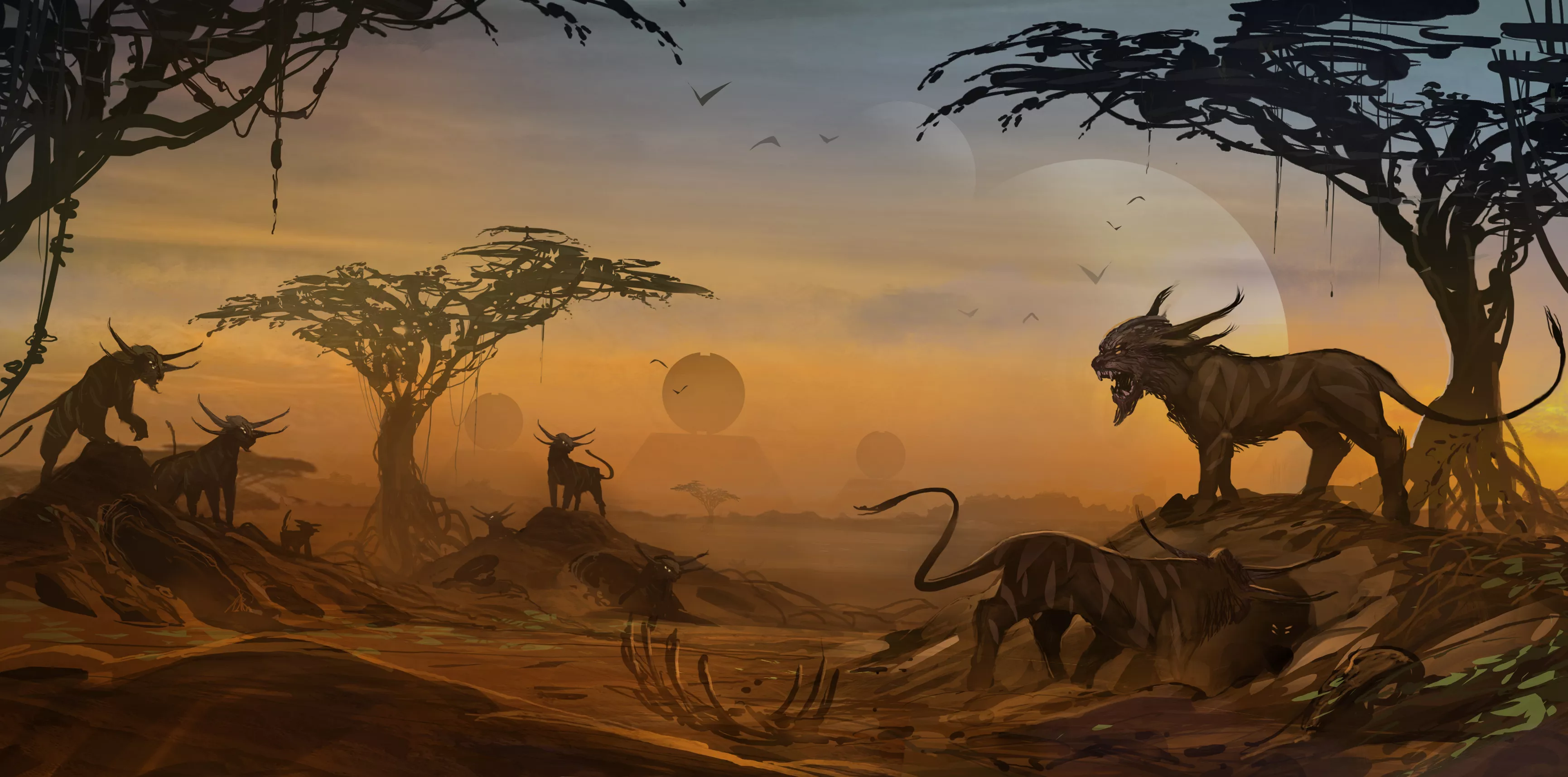
Planet Ceiba Joins the Unioverse, Now You Can Give it Sentient Species!
A couple of weeks back we invited our community to help us create a new Unioverse planet, as part of our New World Genesis program and – wow! – they delivered.
We received more than 70 entries from Unioverse fans who submitted names for the new planet, as well as information about its star system and global conditions. Our Selection Committee, made up of Unioverse Co-Founders and Narrative Leads, pored over each entry and narrowed it down to six finalists. Over this past weekend, the finalists were presented to the Unioverse Community, which picked their favorite.
So, we are thrilled to announce the new name of the Unioverse planet is…
Ceiba
Let’s send out a big Servitor-sized congratulations to Luke Salvalaggio, who not only came up with the winning name but also helped bring this planet to life by creating such details as:
- Ceiba is the second planet from the system’s binary stars, Quetzel and Coatl.
- A Ceiban year is 729 Ceiban days.
- Due to the gravitational interactions with its moon, Ceiba spins faster than Earth; a Ceiban day is approximately 22 Earth hours.
- Ceiba gravity is approximately 0.95g.
You can read even more about this fascinating new addition to the Unioverse on its very own Unioverse Wiki page, where Salvalaggio’s work (and credit!) will live on for the life of the Unioverse.
Now that you’ve seen how much fun worldbuilding can be, you too can get in on the action and have your work immortalized in the fabric of the Unioverse.
Now that Cebia has a name and some basic geography, it’s time to populate this planet with some living things. For this round of worldbuilding, we want you to come up with some sentient beings for Ceiba.
You can find more criteria for what we’re looking for on the New World Genesis submission page, but here’s a quick taste of what you can expect:
Is there only one sentient species on the planet? More? What are they like (appearance, habitats, behaviors, etc.)? Are different races or subspecies present? What stage of development are they in (recently sentient, evolved, space-faring, etc.)?
Think you’ve got a great idea for new lifeforms?
Step 1: Read Luke’s winning entry in the wiki to better understand some basics about Ceiba.
Step 2: Read Chapter 8 of Unioverse Origins, which will provide more details about the planet.
Step 3: Visit the official New World Genesis submission page to learn the specifics about what we’re looking for and how to enter.
Submissions will once again be read by our Selection Committee, which will winnow the entries down to a handful of finalists that the Community can vote on.
And just to make sure you don’t forget, winning entries become an official part of the Unioverse canon – so your work will be experienced by Unioverse fans all over the world!
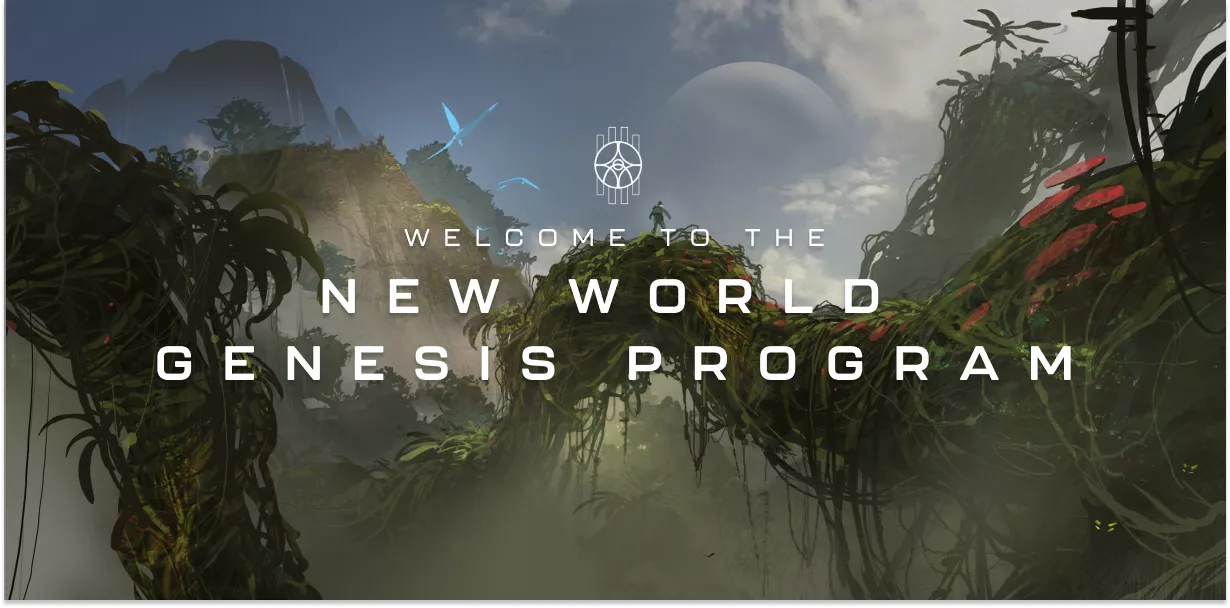
Create a Planet and Carve Your Name Into the Unioverse
If you’ve been following our Worldbuilding Secrets podcast (you have been following our Worldbuilding Secrets podcast, right?), then you’ve enjoyed a masterclass in storytelling and, as the name suggests, worldbuilding.
Now we want you to help us build a world. That’s right, there’s a new planet in the Unioverse, and we want you to tell us all about it. Here’s how it works and how you can get involved.
Background
If you’ve been reading our Unioverse Origins story drops (you have been reading our Unioverse Origins story drops, right?), then you know that in the latest issue (#7) Malcolm Orion jumped to a strange new planet. Five hundred years after that initial discovery, the inhabitants of that planet now want to join the Merge.
That’s where you come in, because the Unioverse is a community-owned franchise and now we really want the Community to participate!
New World Genesis Program
Each week for the next four weeks, we’ll give you two creative prompts asking for your input in what we are calling The New World Genesis Program. These will range from the simple, like naming the planet, to the more complex, like mapping its star system and describing the societal structures of its inhabitants.
We really want you to put some thought into your answers because they will be read by our co-founders Tony Harman and Wyeth Ridgway, and our narrative team of Brent Friedman, Andy Baker and Josh Viola. They’ll go over all the submissions and narrow it down to the top contenders.
Finalists will be posted to Discord where the Community will get the final vote on each prompt. And trust us, having your submission picked is more than just a feather in your cap…
Credit Where Credit is Due (and Signed Art, Too!)
The winning entries as voted by the Community will have their work entered into the official Unioverse Wiki with accompanying credit. That means your work and name will live on as long as the Unioverse exists! Talk about bragging rights…
But wait! There’s more! Winners will also get a cool print of the planet you helped create signed by Stuart Jennett, the Unioverse’s lead artist! How cool is that?!
Next Steps
OK. So you’re all set, what do you do now?
First thing to do is get caught up on the Unioverse story. So check out the Unioverse Story Wiki and read all the Unioverse Origin chapters.
Then join our Discord, if you haven’t already. That’s where voting will occur, and it will give you a chance to connect with other creatives and see what else has been submitted. (Plus, you can’t vote if you’re not on our Discord!)
Once you’ve done that, here’s a schedule for the first prompt:
- Monday 02/20 – New World Genesis Program Goes live – 12 PM EST
- Thursday 02/24 – Submissions Close – 3 PM EST
- Friday 02/25 – Top 10/15 announced and Voting Opens – 3 PM EST
- Saturday 02/26 – Voting Closes at 8 pm EST
- Sunday 02/27 – Winner announced and Wiki goes live 3 PM EST
You can find the official New World Genesis program submission form here.
So join Discord, mark your calendar, and help make the Unioverse even more amazing!

The Unioverse Saga Explained in Four Minutes and Our Story Wiki Revealed!
Everyone loves a good story, and, not to brag, but we have more than 25 of the best storytellers on the planet writing ours.
The Unioverse is a galaxy-spanning, sci-fi saga about an ancient technology uncovered on Mars that allows people to beam their consciousness across the universe. Suddenly, humans are connected with other worlds, other species, and to the mysterious alien presence working behind the scenes. Following in the rich traditions of works like 2001 and The Expanse, The Unioverse is already shaping up to be a modern science fiction classic.
Today, we are thrilled to release two new ways for you to get on board and delve deeper into the story of the Unioverse.
First, we have a new video featuring Brent Friedman (see above), who leads the narrative of the Unioverse explaining the broad story of the Unioverse. Brent’s a veteran storyteller who wrote for Star Wars: The Clone Wars and on hit game franchises like Call of Duty. So our story is definitely in good hands.
The video is less than four minutes and well worth your time as Brent lays out the foundations of the Unioverse. Whether you’re a hardcore fan or a total newcomer, Brent’s video will quickly and easily launch you into this amazing new world we are building. So, go! Watch the video. We’ll wait.
OK. Now that you’ve gotten a taste of the Unioverse, it’s time to go all-in. So go head on over to the Unioverse Wiki! There you’ll find an ever-growing compendium of information on all things Unioverse. Want to know what Creator Transpods do or who Sinfed Reyu is? Go to the Unioverse Wiki. Be sure to bookmark it as we’ll be adding to it on a regular basis.
Finally, this isn’t new, but we continue to drop chapters of the backstory of the Unioverse. We just released Chapter six of Malcom Orion’s journey as he navigates being the first human to have their conscious jump across the universe. Chapter six ends with a bang, so you’ll definitely want to check it out!
And, of course, after you watch the video, read the wiki and download Orion’s backstory, be sure to hop on our Discord to discuss and debate the story points with like-minded Unioverse fans!

Dive Into the Origins of the Unioverse
Fun Unioverse Fact: We have a team of more than 25 world-class writers, artists and storytellers helping us craft the narrative world of the Unioverse! This franchise is shaping up to be truly epic and massive and awesome and… Well, instead of my telling you about it, you should just experience it firsthand.
For the past couple of months, over on our Discord, we’ve been dropping special Unioverse Issues that tell the origin of the Unioverse. Each issue is like a chapter, telling the story of Malcolm Orion, the first human to use the alien jump pods discovered on Mars. We follow his adventure as his consciousness is instantly transported across the universe to a massive space station where he encounters unfathomable alien technology and tries to understand the wonders — and dangers — it presents.
These issues are free to download so go enjoy them now. Then bookmark this page for future issue drops!
Unioverse Origin Issue #1 – Malcolm Orion
Unioverse Origin Issue #2 – The Chair
Unioverse Origin Issue #3 – The Jump
Unioverse Origin Issue #4 – The Hub
Unioverse Origin Issue #5 – The Map
Unioverse Origin Issue #6 – The Warrior
Unioverse Origin Issue #7 – The Traveler
Unioverse Origin Issue #8 – The Herald
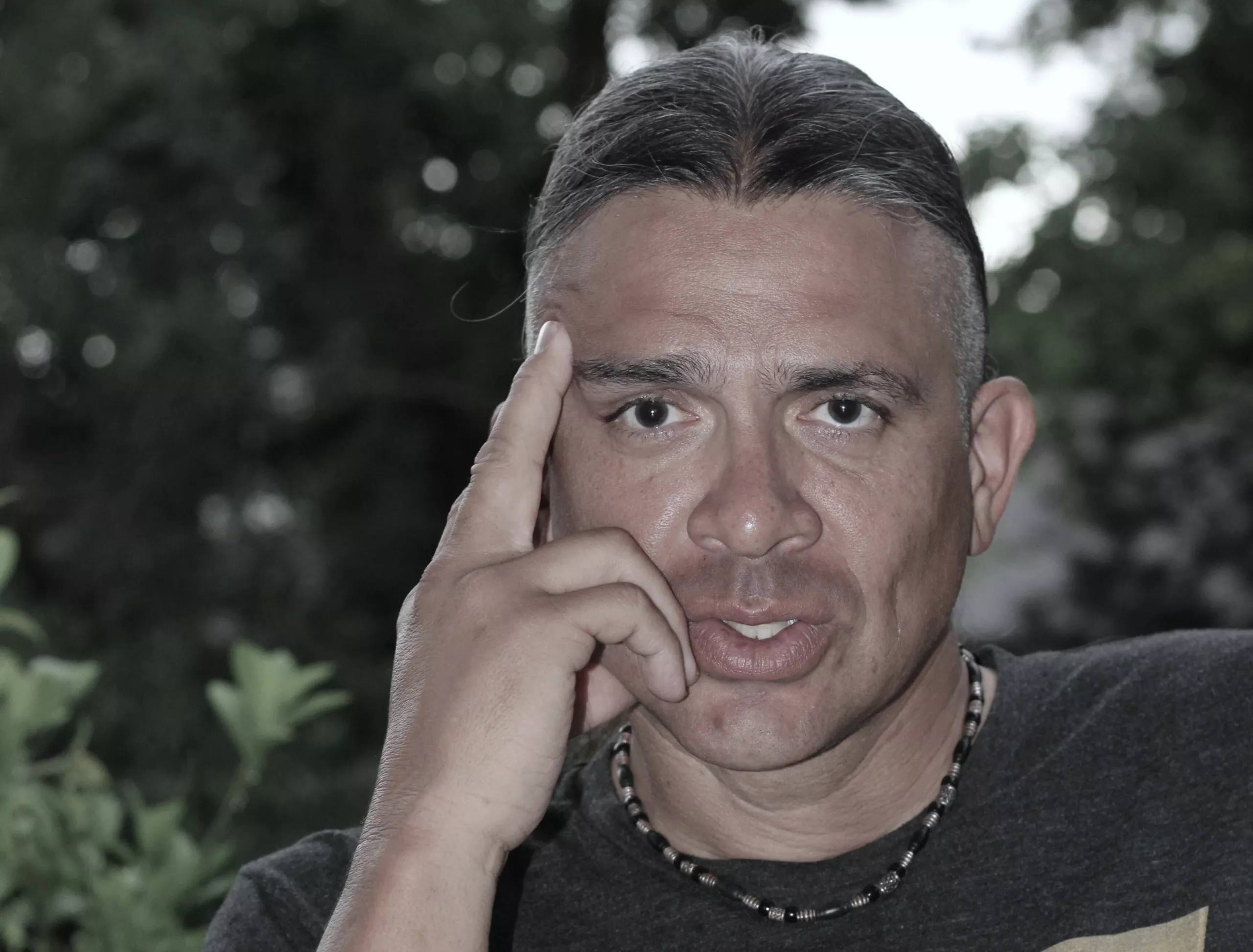
Why Stephen Graham Jones is Dropping Into the Unioverse
This post was authored by New York Times Bestselling author, Stephen Graham Jones (The Only Good Indians, My Heart is a Chainsaw). Graham Jones will also be contributing to Stories of the Reconvergence, the forthcoming Unioverse anthology of short fiction and poetry
You can tell a world—a Unioverse—is a productive storytelling space if, when you write within it, it’s just spinning off more and more story elements. Some science fiction writer from decades and decades ago, who I’m about to violently misparaphrase, said that what makes a place real for the reader isn’t the schematics and the history, the climate and the technology, the language and the look, it’s the third- or fifth-level repercussions of all that climate and language and history. Like, how in Ender’s Game, Ender’s name comes indirectly from protocols built into that culture, that era, but it’s not the first thing you guess when given those protocols. How in Altered Carbon, these re-sleeving capabilities have of course led to military units specializing in gaining control of their bodies quicker, to have a tactical advantage . . . but this also leads to methuselahs. Or, in our own world: introduce franchise horror characters, and, years later, you get Cthulhu plushies and Funko Pop Freddy Kruegers, which I’m pretty sure none of us could have ever guessed.
Drop a pebble into the pond of reality, and characters in stories will be surfing those distant, third- and fifth-level ripples for years and years.
By the time I dropped into the Unioverse, that pebble had already been dropped, and my characters were way out at the edge of the pond, riding the ripples. I’ve written for a few pre–existing properties before, and for each I usually get a bible, outlining what I can or can’t do. But, really, with work done within these pre–existing worlds, the cardinal rule is always “don’t break the place up.” This is why tie-in novels usually happen in a little narrative eddy off to the side, where A) nothing can get broken, and B) everything can reset after, such that the audience doesn’t need to engage this tie-in, but, if they do, it’s not going to mess anything up for them, either.
The Unioverse is a little different to work within, though. For a couple of reasons. The first is that, unlike nearly every other franchise and property, this one isn’t a snowball that’s been rolling for decades, picking up different, often contradictory “rules” along the way. Rather, the Unioverse has been completely thought-out all at once. In comic book terms, you could say that this is Ultimate Spider-Man, not decades of Amazing and Spectacular done by a host of writers, meant to somehow all be the same character, the same arc. In the Unioverse, there’s no retcon necessary to tell the next installment.
And? “Next” isn’t even the right word, there, which is the second reason the Unioverse is a bit different to work within. This isn’t about sequence or progression, and there’s no quest, no common goal. Rather, the Unioverse . . . it’s sort of like Terry Pratchett’s Discworld, I guess? It’s a place where all the stories happen, but across time, and without relation to each other. It’s an open world, where you make your own stories. And, instead of a phonebook of a bible, there’s a wiki you can refer to when making those stories.
Trick is, though, the Unioverse’s inbuilt “rules”—not the right word, quite—aren’t bumpers making your bowling ball find the pins eventually, but rather answers to questions your story or game or adventure is probably already asking, fundaments that push you forward rather than hold you back. They’re the backdrop, they’re the physics, but, if we’re sticking with the bowling thing, then the alley, man, it’s twenty lanes wide: there’s so much room to operate.
Check out Stephen Graham Jones talking about the Unioverse on our Worldbuilding Secrets podcast!
Example: in my story “The Distance,” of course the Creator tech is inviolable—if it’s not, then the physics of the Unioverse crumble. But, since that Creator tech’s been part of things for five hundred years, I had to imagine that, first, there would be all kinds of rumors and theories about its source, its inner workings, its permeability. Second, though—and this was the fun part—I had to suspect that, while people can’t imitate it, they probably can retrofigure back from it, to try to get to some version of the same place. As in, they can see, via Creator tech, that this or that is possible, and so, with that assurance, they delve in with their own limited tech, try to accomplish something . . . if not the same, then in the same vein, anyway. Or, as close as they can get. “Sys tech,” it’s called in my story: wholly inferior to Creator tech, but at least trying to approach that same level of competence.
And then, too, my protagonist being an animal smuggler—everyone’s got their specialty—that left me with the much sought-after obligation to dream up animal after animal, from planet after planet, even down to deep-space carrion mites.
The only thing I can imagine that might be half as much as fun as dreaming up alien pets would be racehorse naming. But? With these animals, I even get to do a little of that naming, so . . . best of all possible worlds, here, yes. Or, rather, best of all Unioverses, that being the one where I can have giant, world-changing fish-worms and bird-things that spout insults.
Hope y’all like the story, but, more than that, I hope you have fun jumping all through this place. You won’t understand the circuitry—it’s Creator tech, nobody gets it—but that doesn’t mean you can’t ride it to the end of known space, and then go back, ride it out a different direction as well.
Stephen Graham Jones
